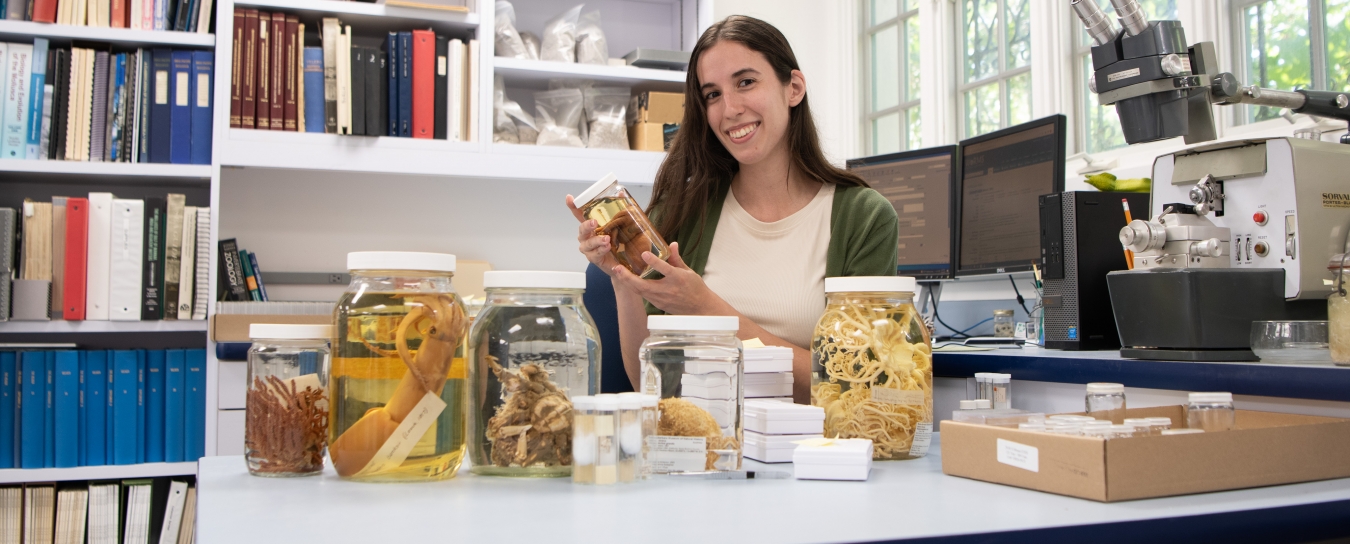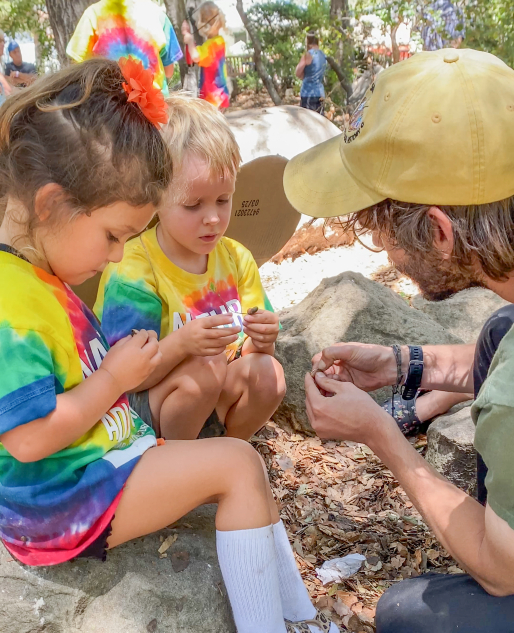
General
Browse our answers to questions about the practice of science. We’re sharing expertise in what museums are for, paths to museum careers, systematics, phylogenetics, nomenclature, microscopy, photography, and more.
- Anthropology
- Rocks & Fossils
- Invertebrates
- Vertebrates
- Botany
- Astronomy
- Fungi
- General
- Recently Asked
Question about the Museum Collections
I am a high school student writing a paper for school about natural history collections. I love viewing them, but there is a lot that I don't know about them that I wish I did. Are the collections still being added to, and if so, by who? I have heard that the majority of specimens in museum collections are not on display in the museum. How is it decided which specimens are to be displayed in the museum and which ones aren't? I'm also researching the societal value of the collections. In your eyes, what is the most important reason to have natural history collections? Sorry this question is a little long. Thank you for your time and consideration.
Curator Response
Hi Trey,
These are excellent questions and we're so glad you asked them. Most of our guests aren't aware that we have collections beyond our exhibits.
1) What is the most important reason to have natural history collections? We couldn't possibly choose one reason; there are so many. Collections support exhibits, and exhibits connect the general public to science and nature for the betterment of both. Researchers depend on collections to help them answer important questions. These answers inform not only how we understand the past, but how we appreciate what we have in the present, and how we steward natural and cultural resources for future generations.
2) How is it decided which specimens are to be displayed in the museum and which ones aren't? Our curators work with our exhibits staff to determine what goes on exhibit. Items on exhibit are chosen in large part for their educational value; they illustrate what the exhibit is designed to teach. Often a display of variety is part of the message. For example, in Bird Diversity Hall, you can see lifelike taxidermy mounts representing hundreds of species of local birds. By contrast, our collections behind the scenes exist to help researchers answer questions about animals and their environment, up to the level of entire populations. To understand populations, you need more data points. So while we have one California Scrub Jay in that exhibit, we have many more scrub jay study skins in collections. You can read about our study skins here.
3) Are the collections still being added to, and if so, by who? It depends on the collection. In the early decades of the museum (we are 105 years old), collecting items was a much bigger part of the institution's work. Curators would go on collecting trips, and contractors were sometimes paid to collect items for collections and exhibits. We engaged in a lot of active archaeology, particularly what is known as salvage archaeology. This refers to when development is taking place in an area and archaeologists have an opportunity to document and preserve artifacts or remains at the site before it is disturbed or destroyed. Modern researchers are still learning from these historic collections.
Over time, our focus has shifted to protecting our collections, which are substantial and no longer require a lot of active building. This shift mirrors a regulatory shift as well. The collection of specimens is now highly regulated to protect animals and ecosystems. The collection of artifacts and human remains is also highly regulated, to protect archaeological sites, cultural resources, and grave sites from looting and disturbance.
Some of our collections are historic; they represent a group of items collected by a certain person or group over a certain period of time.
Other collections are more dynamic. How items are added depends on the collection. Some examples include:
Invertebrate Zoology:
We receive collections donated by collectors (especially shells). We receive collections donated by scientists or laboratories which are closing or moving We actively collect insects used in our ongoing research.
Vertebrate Zoology:
We serve as a repository for fossils from the Channel Islands National Park, and may receive items as they are recovered by permitted researchers. We receive other specimens recovered from public lands by permitted researchers. People in the community sometimes bring us deceased animals. We sometimes receive deceased animals from wildlife rescue programs and zoos.
Anthropology:
We serve as a repository for Channel Islands National Park and Lost Padres National Forest, and may receive items as they are recovered by permitted researchers. Our ethnographic collections receive donations and grow with the aid of a small acquisition fund. Because these collections also include works by living Native artists and craftspeople, sometimes we can purchase items directly from the artist.
Library, Archives, and Antique Natural History Prints
We frequently buy books that support our mission.Occasionally We buy prints items when they fill a notable gap in our collection or in a planned exhibition.We receive donated books, documents, artwork, maps, and more.
You can read more about our collections here:
Antique Natural History Prints
Feel free to ask if you have any follow-up questions.
Best of luck with your research,
SBMNH Collections & Research Center curatorial staff


